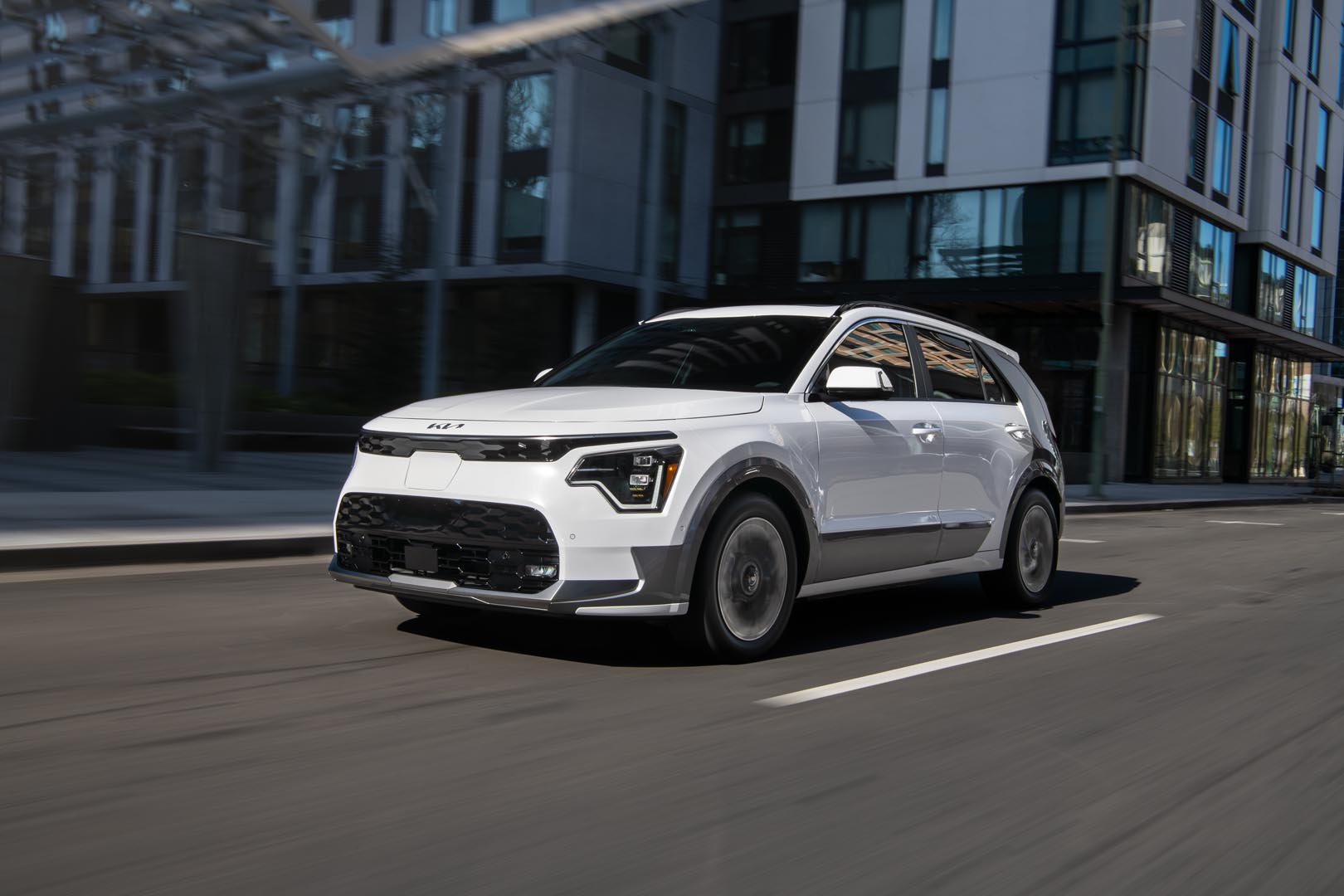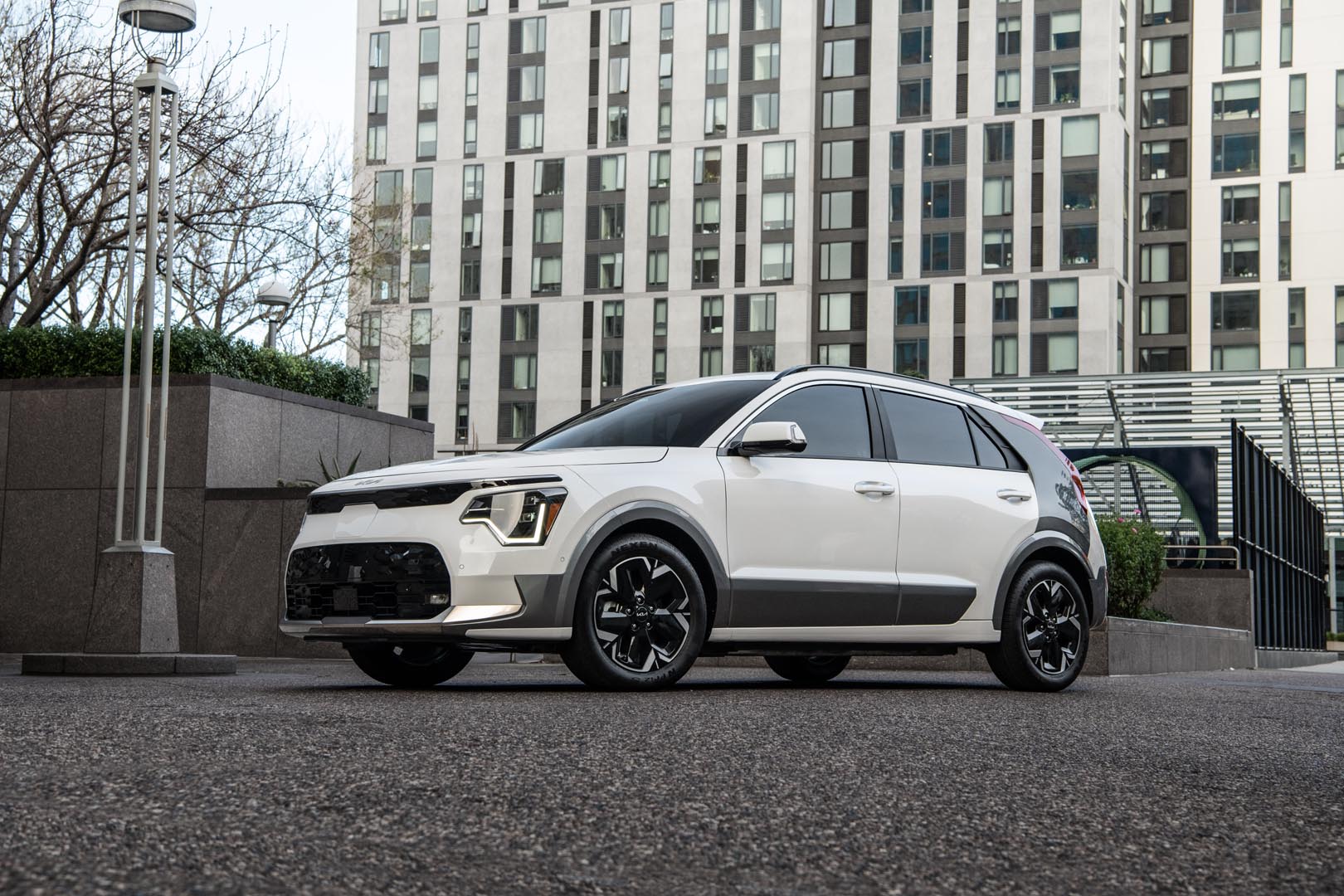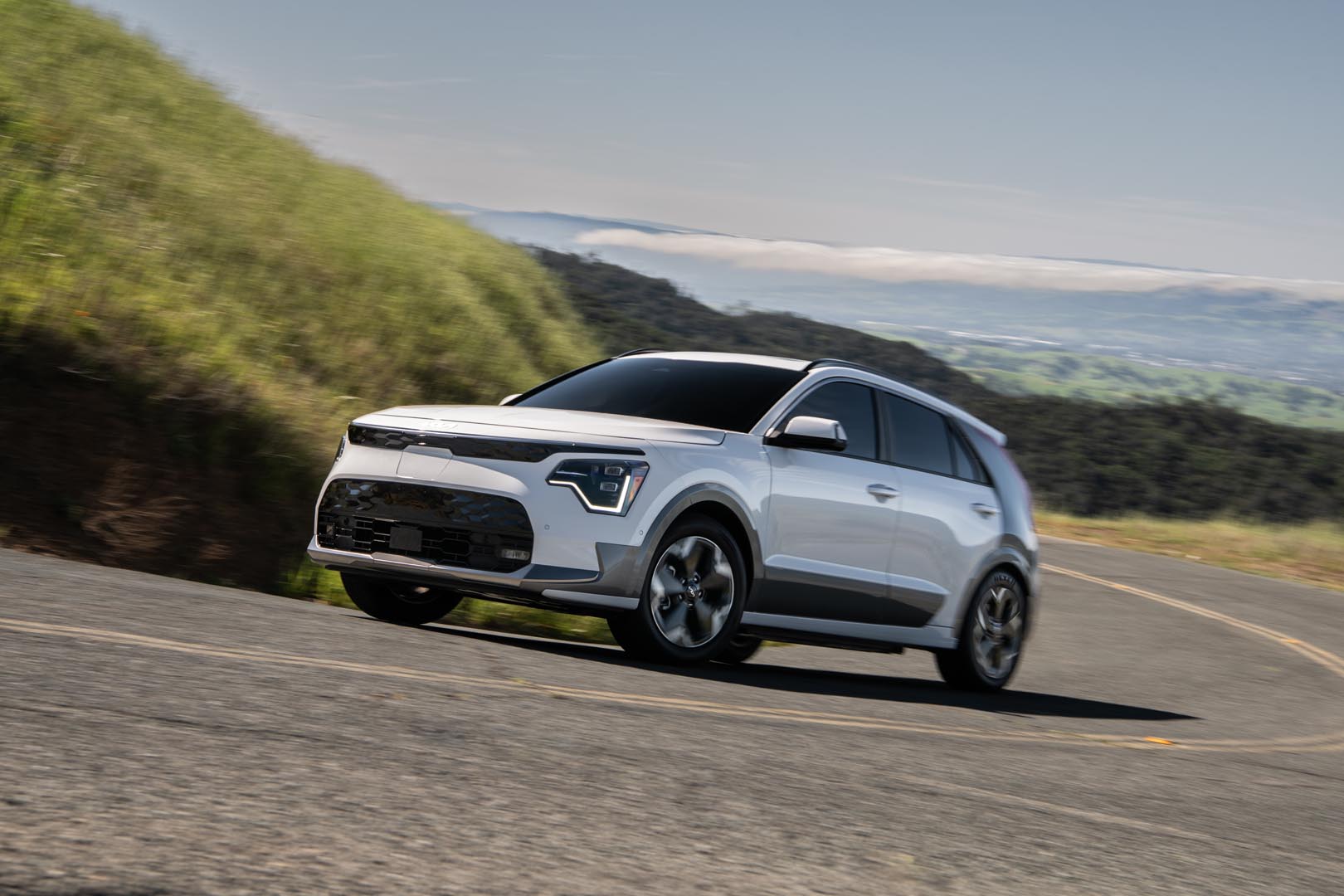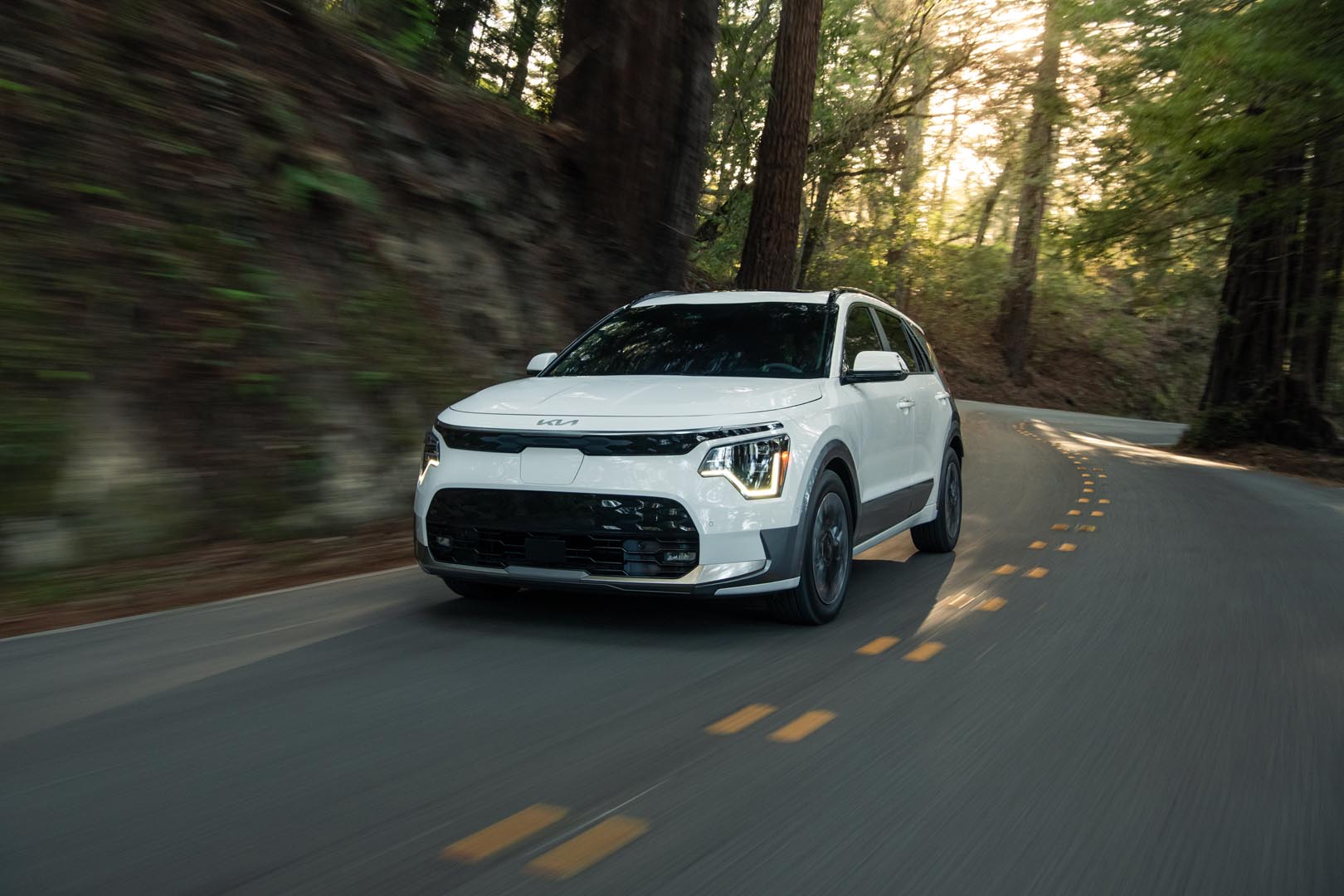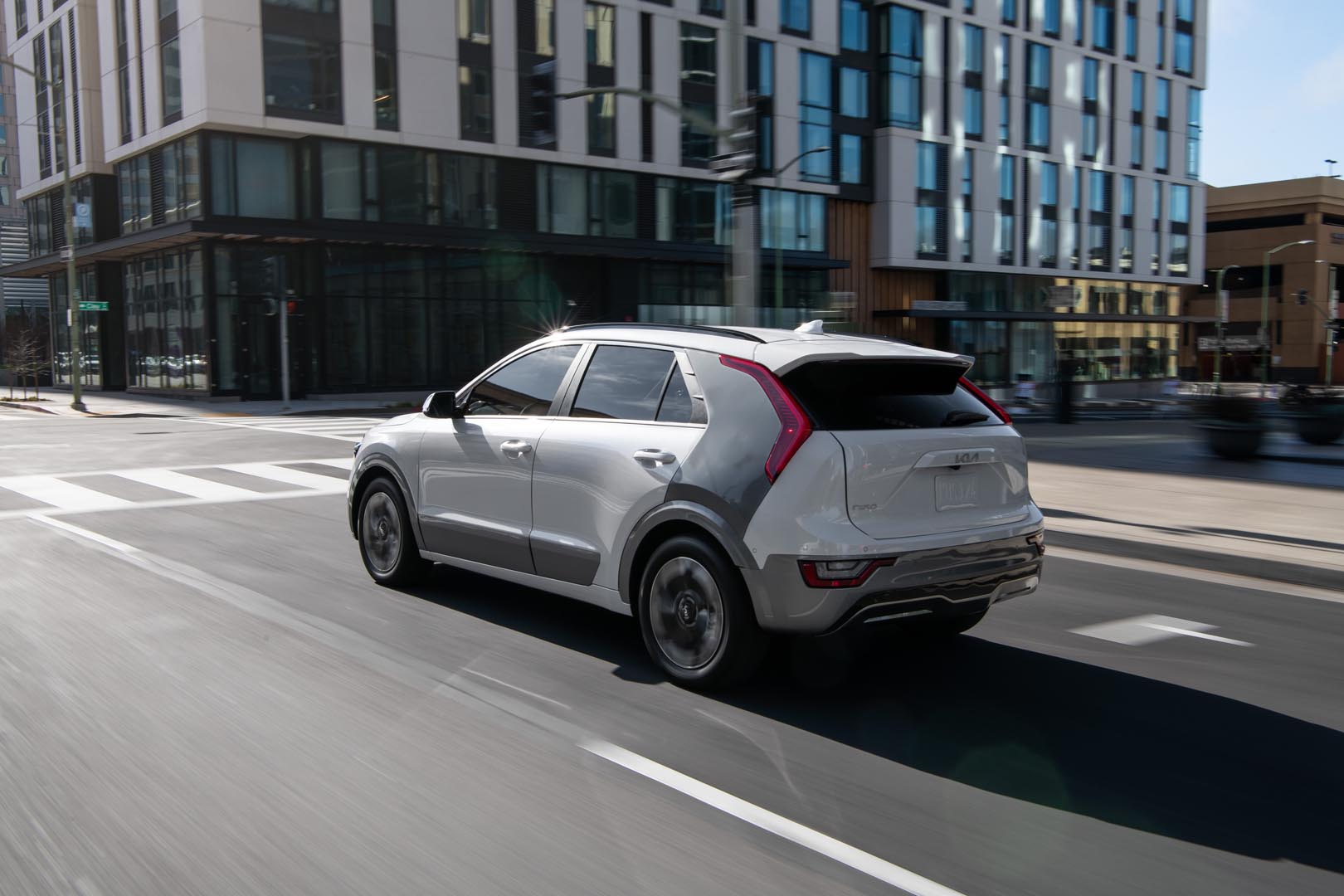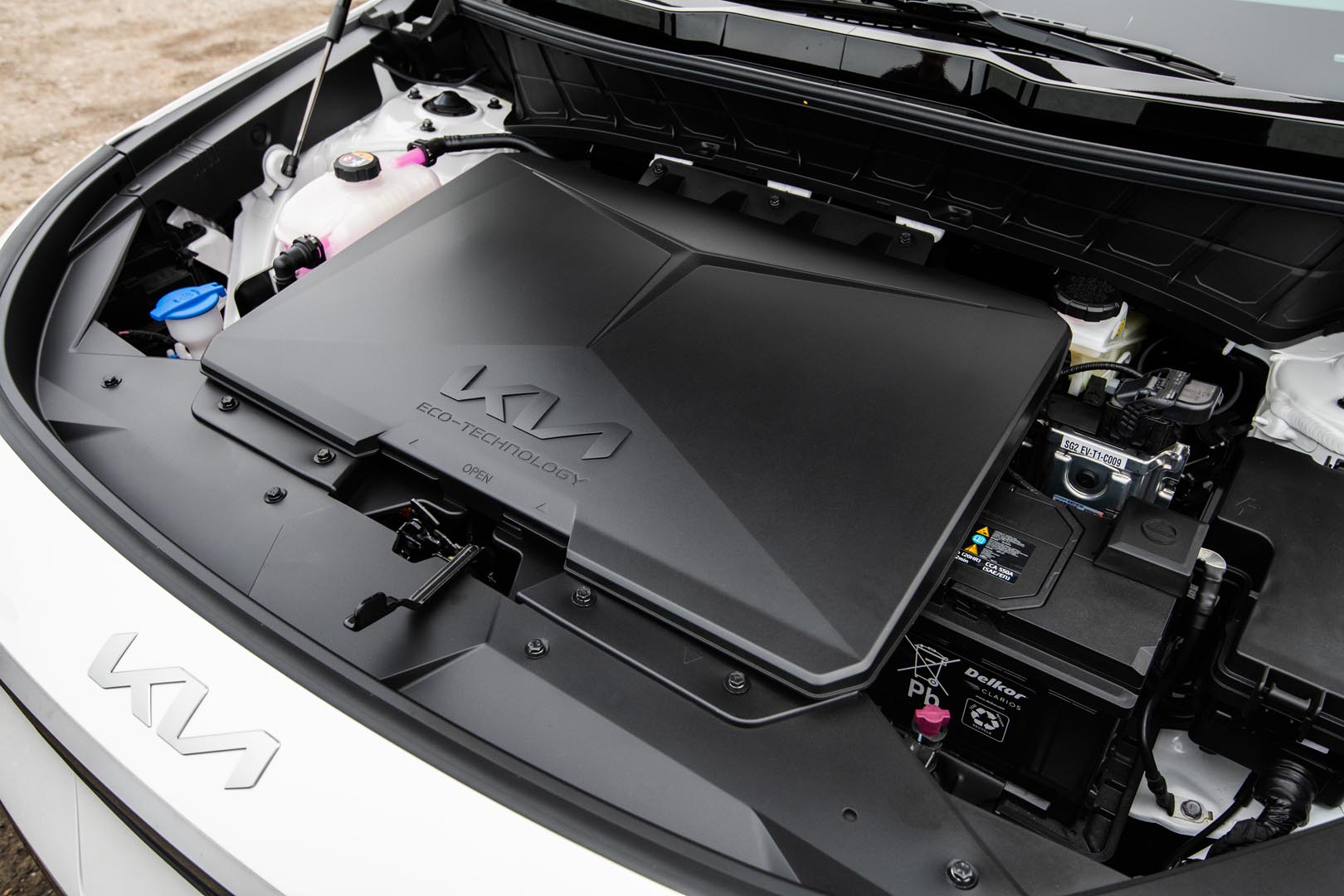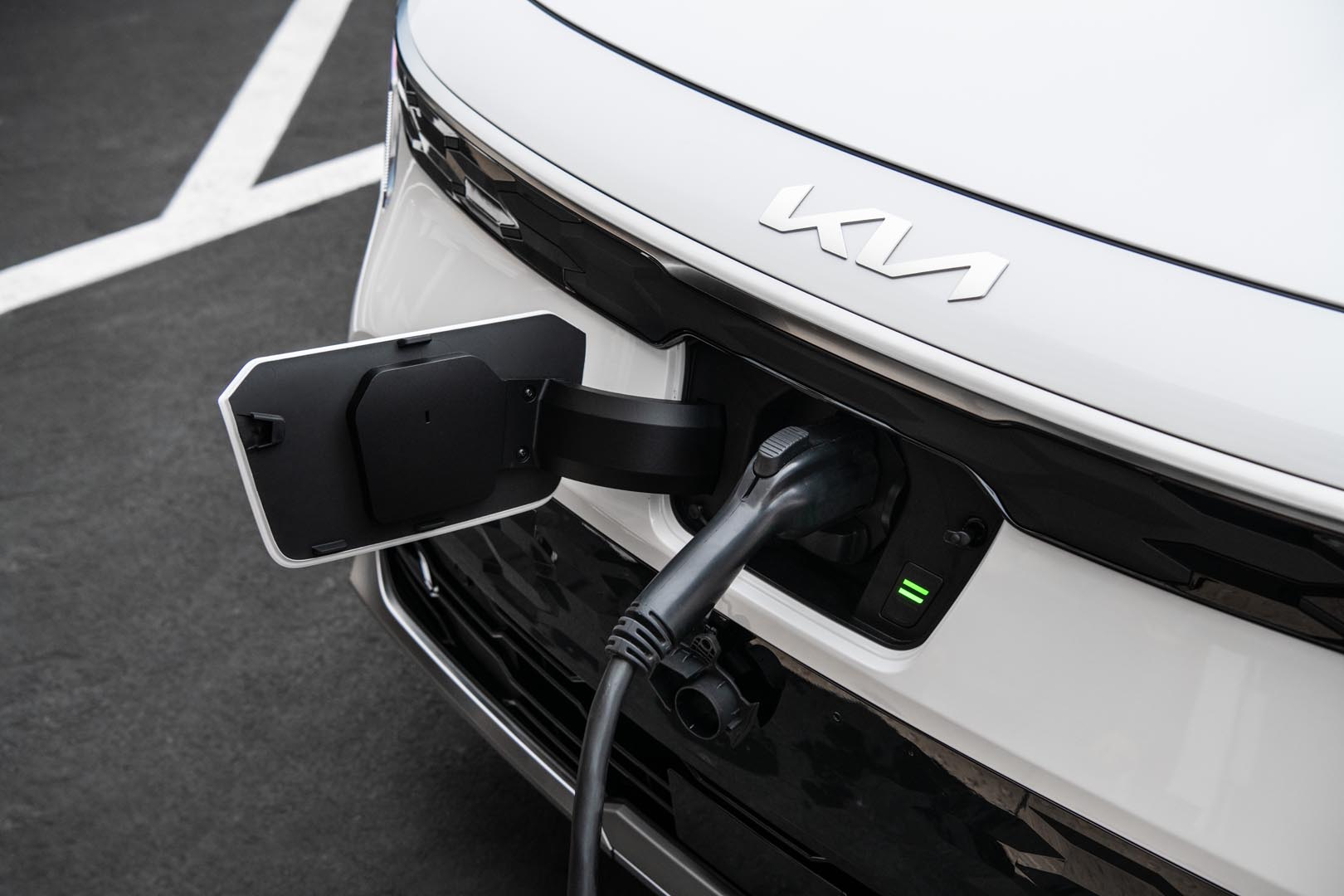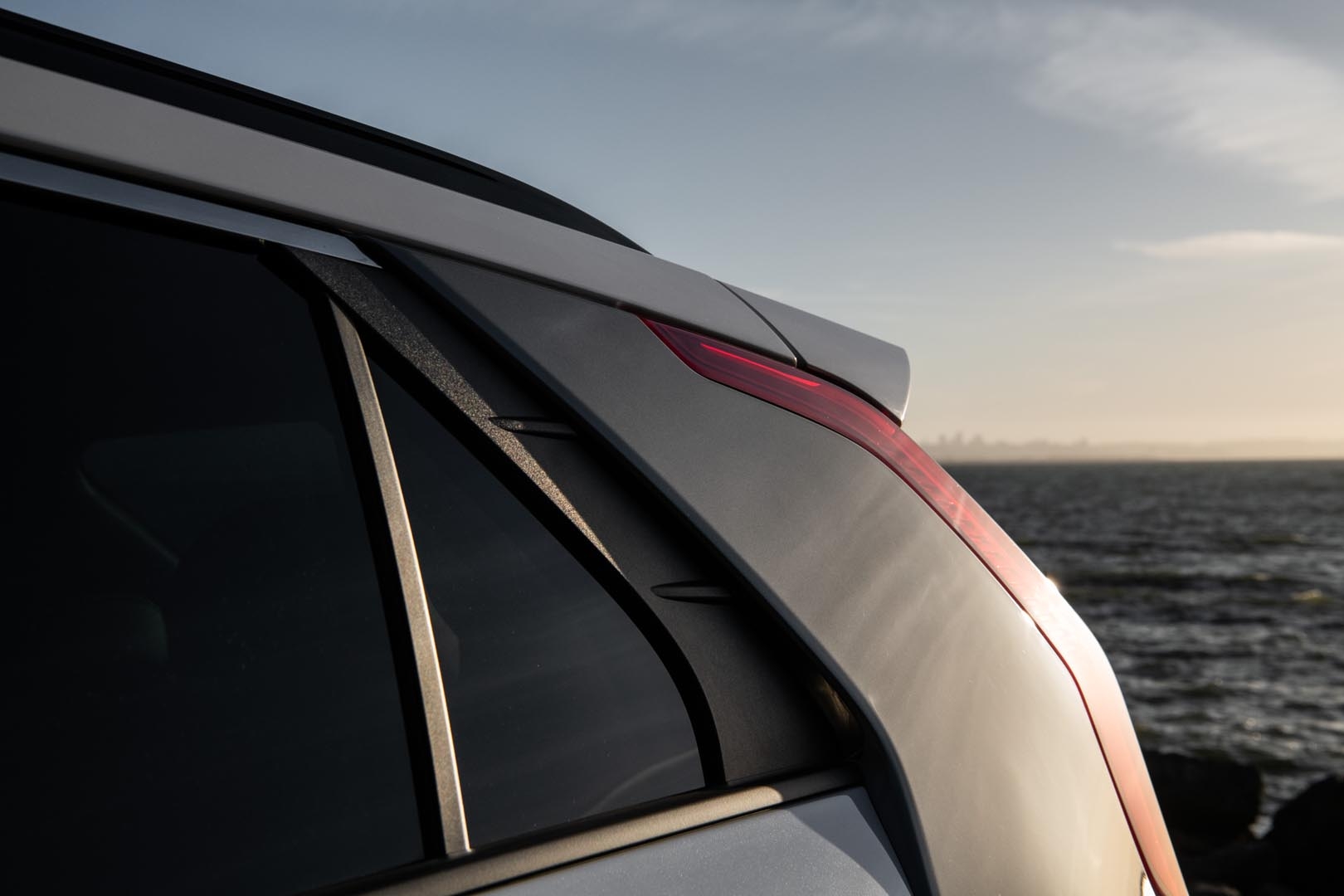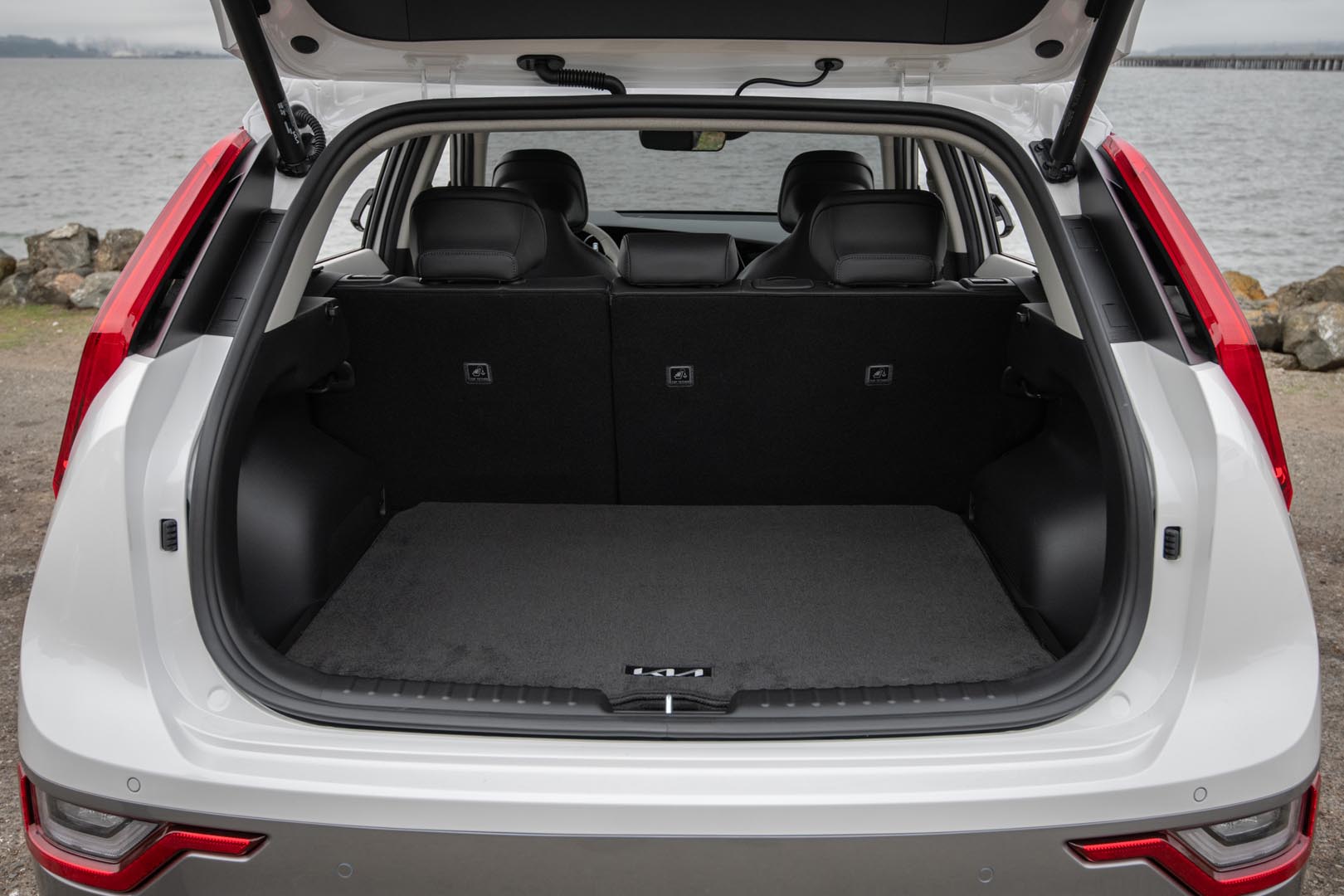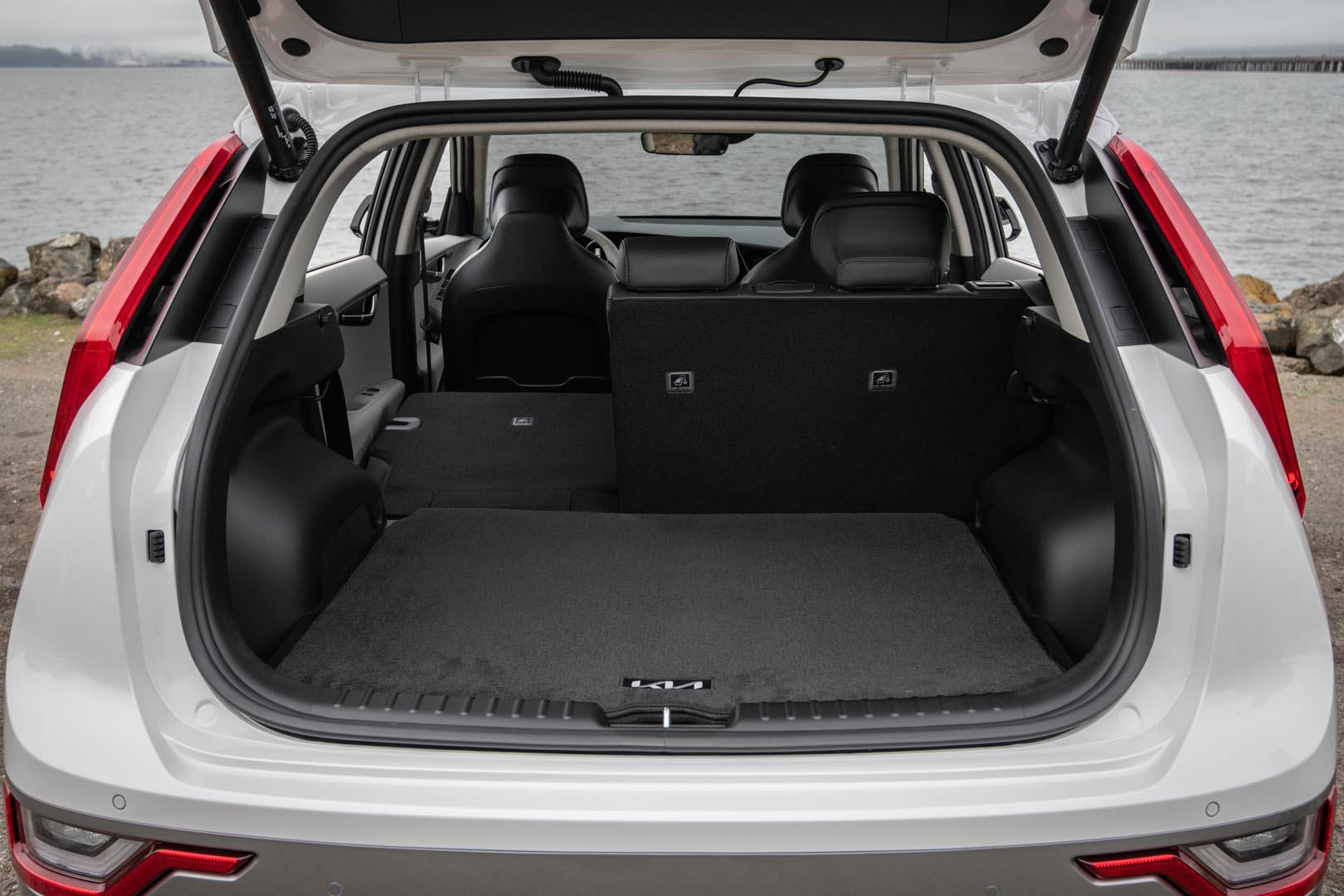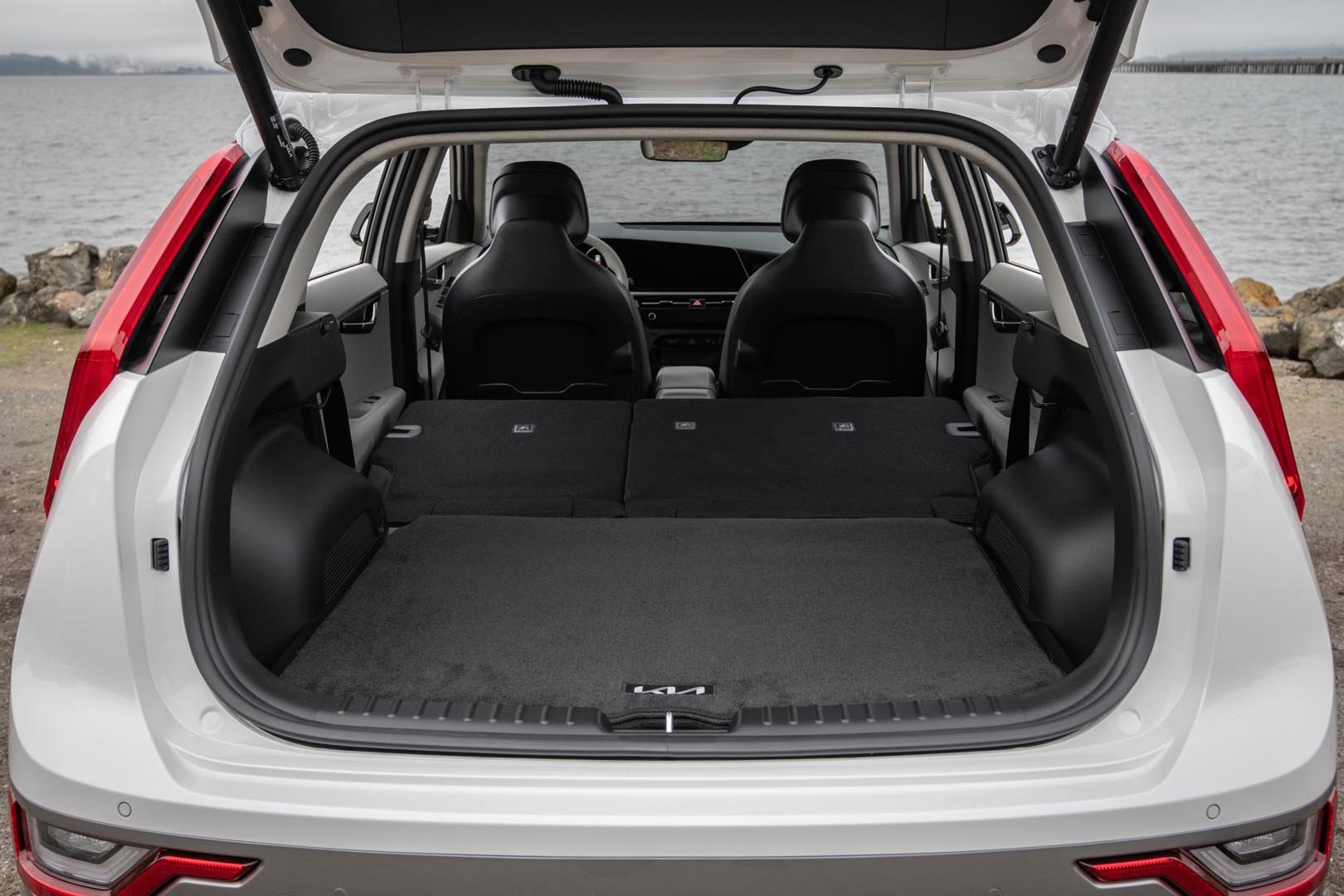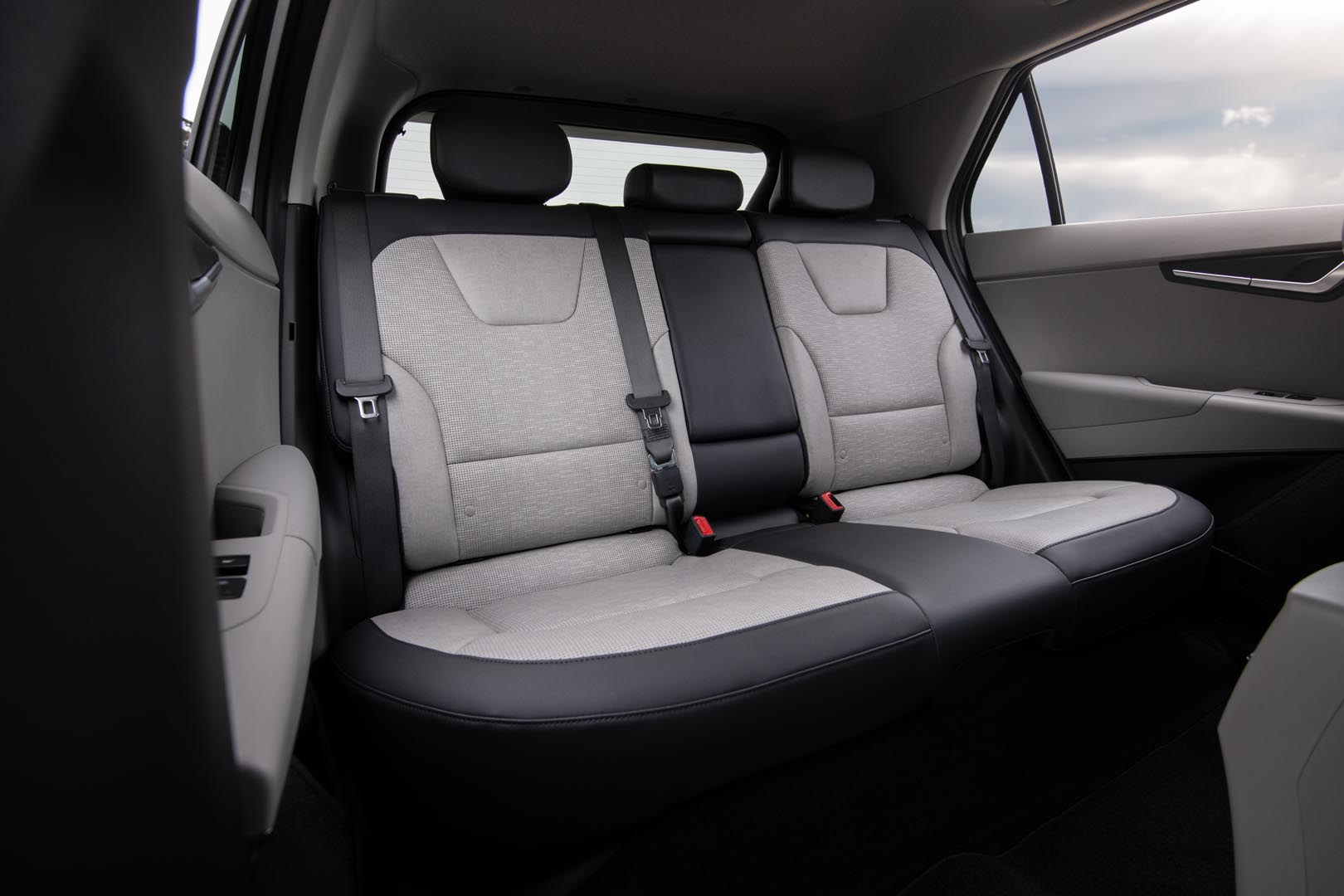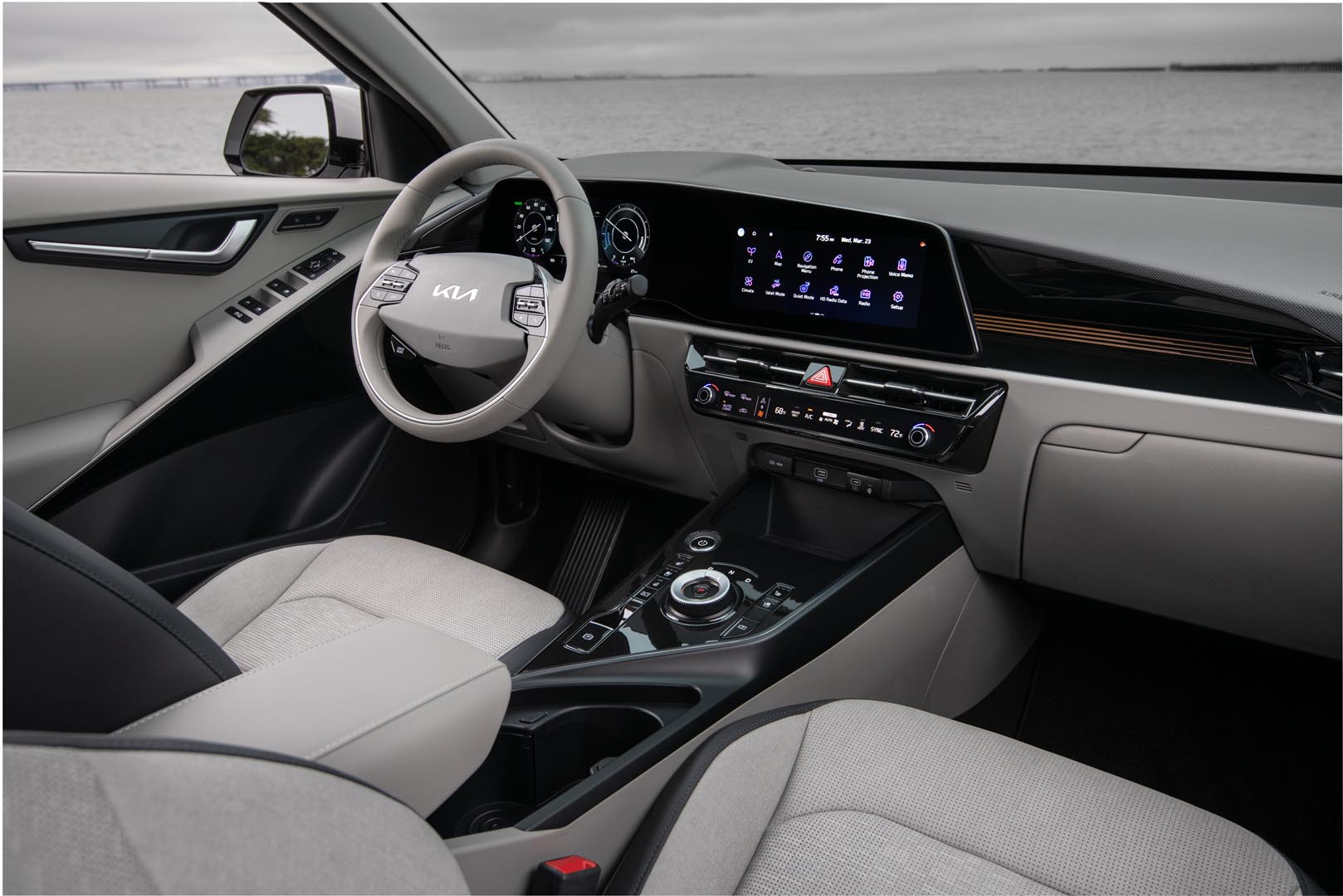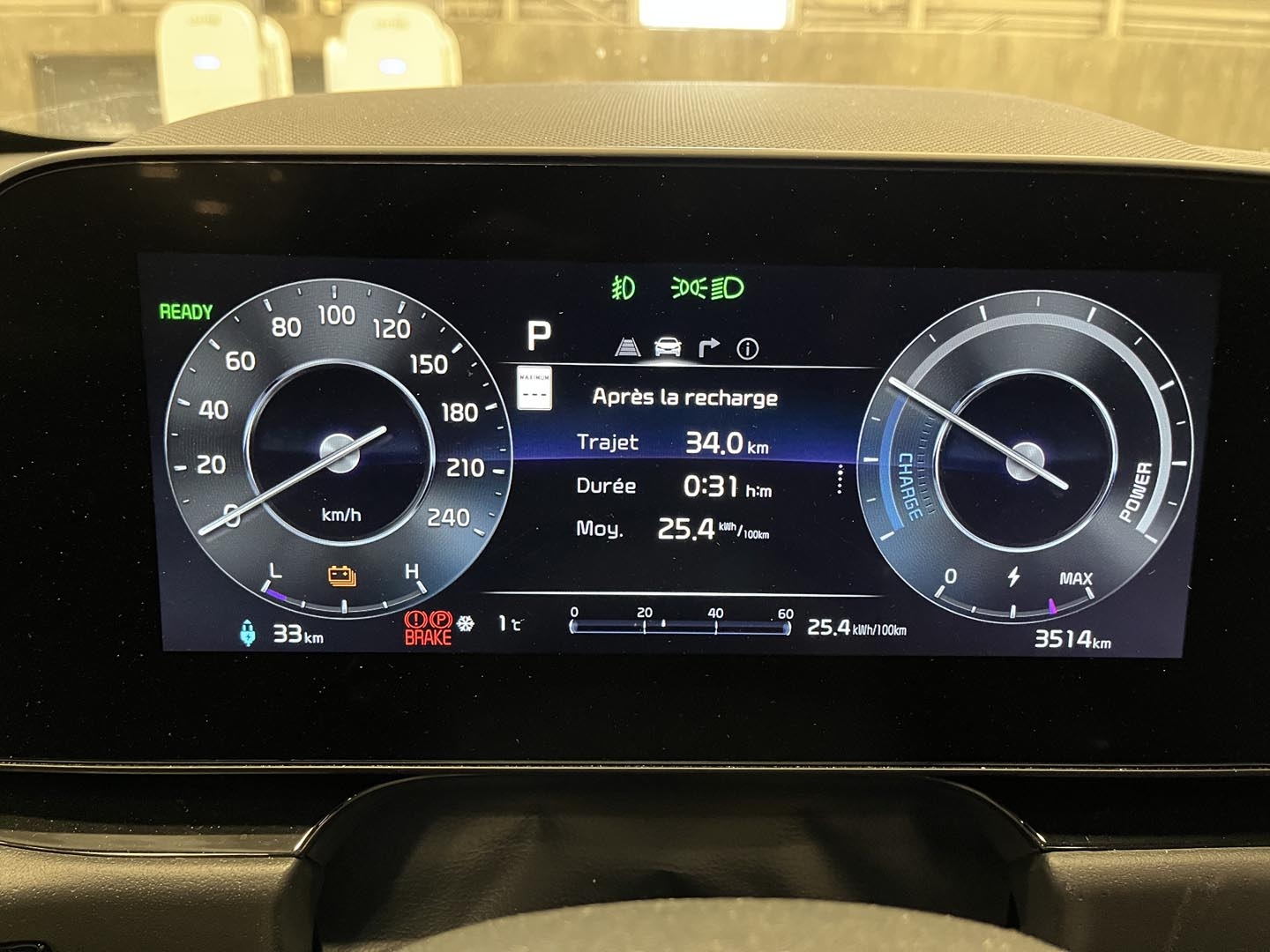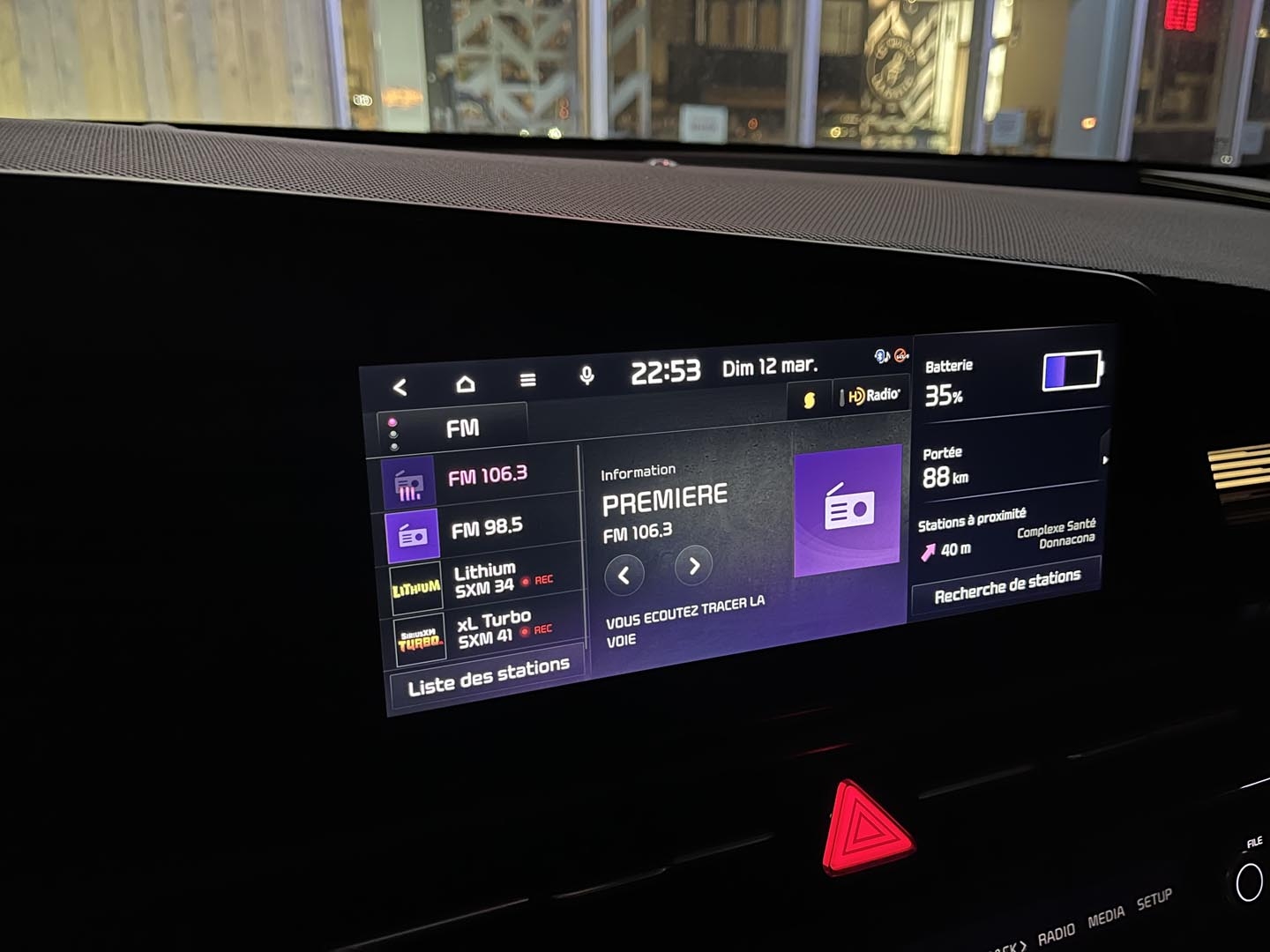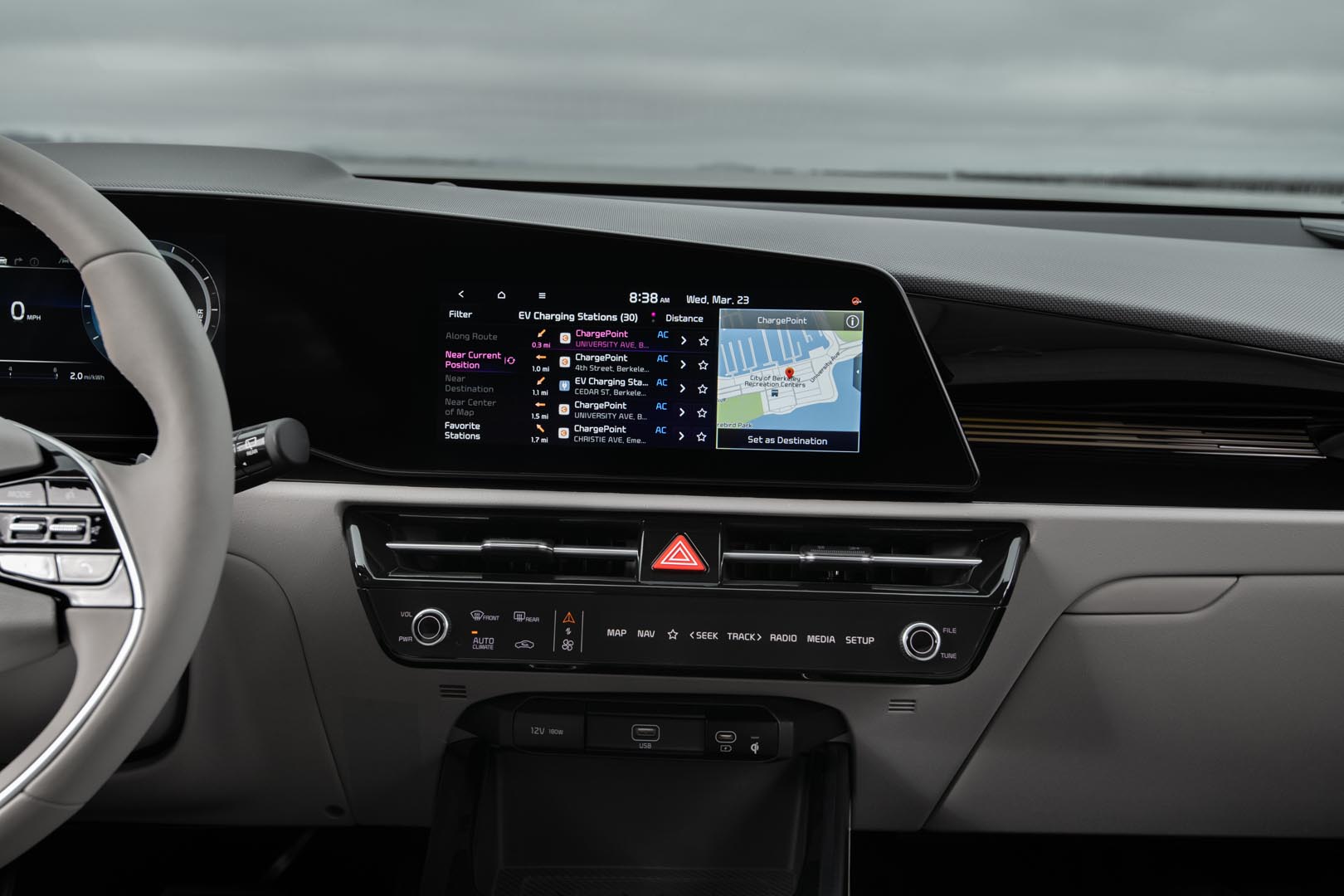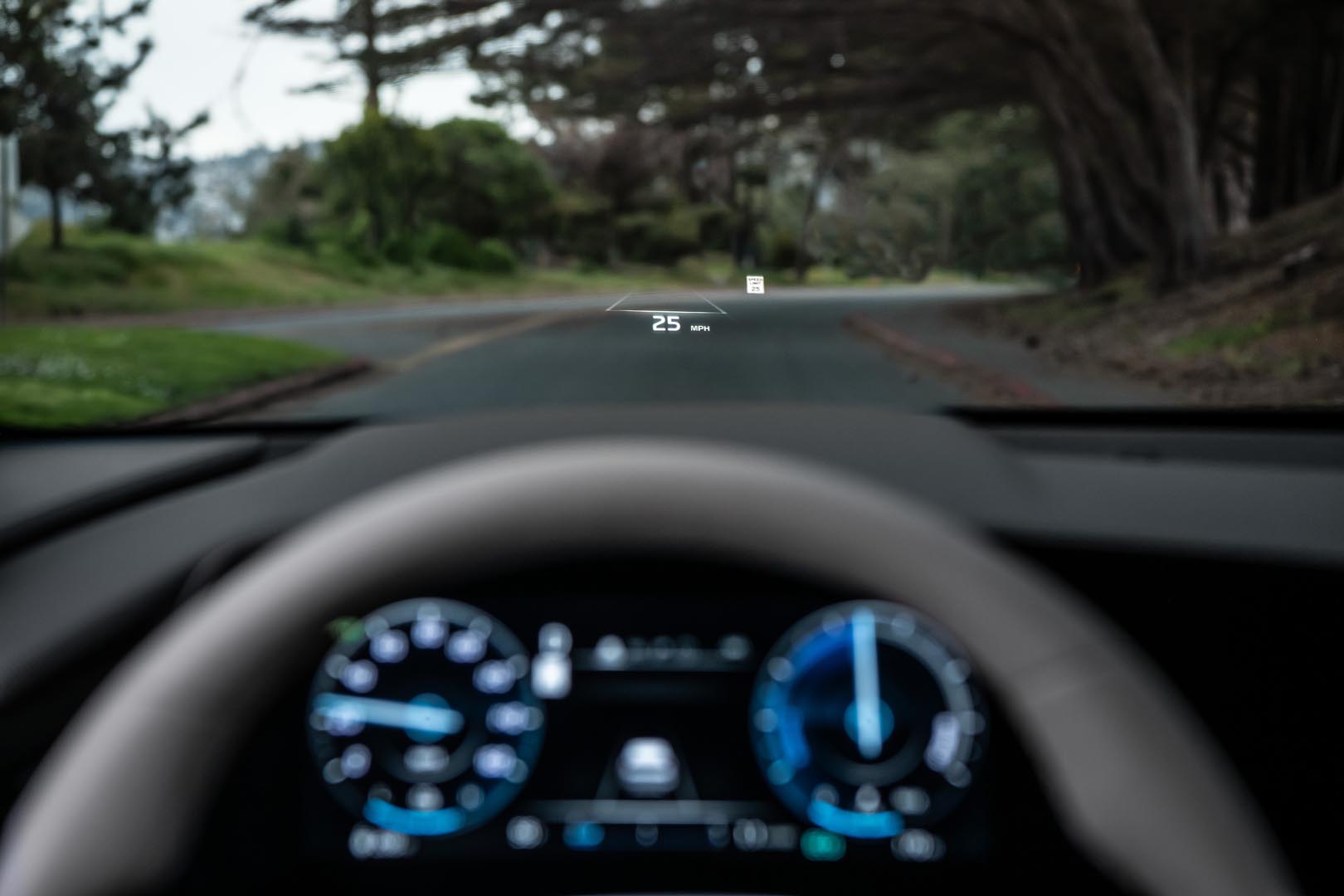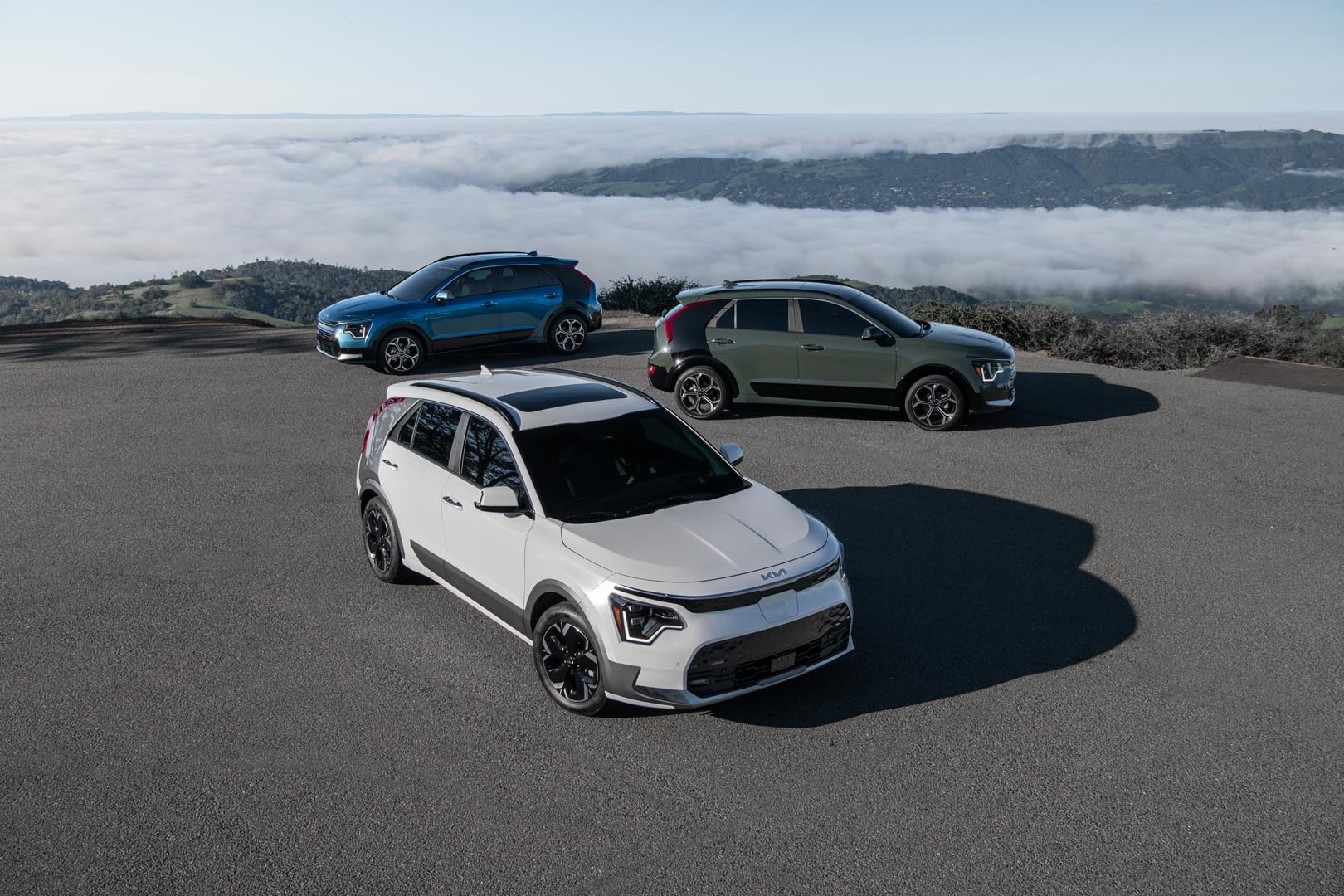
KIA Niro EV 2023
Affordable, practical, agile... and disappointing at the fast charging station
Pros and cons
Pros
- Spacious cabin
- Roomy trunk
- Comfortable ride
- Competitive driving range
- Attentive finish
- Good equipment-to-price ratio
Cons
- Slow charging
- Too-high driving position
- No heat pump (base model)
- Monotonous drive
- Noisy ride
- Unnecessarily complex controls
Overview
The second generation of the Niro is arriving slowly in Canada for 2023 as supply problems persist. Though Kia has an electric vehicle platform at its disposal, the Niro is built on a combustion-engine platform. Which is normal, given that the automaker still offers two hybrid versions of its small crossover—one a plug-in and the other not—in addition to the electric variant we tested. Upon the discontinuation of the Soul EV at the end of 2023, the Niro EV will become the most affordable all-electric vehicle of the Kia lineup.
However, the Niro is overshadowed by another of the conglomerate’s vehicles, the Hyundai Kona Electric. A Kona Electric Preferred can save you a few hundred dollars and comes standard with a heat pump, which Kia restricts to the Niro Premium+ and Limited—sold respectively for $3,000 and $8,000 more than a Niro Premium. The heat pump improves heating and winter driving range so much that in our view it is almost essential in our climate.
Kia employs the same tactic with the EV6, whereas Hyundai delivers all its IONIQ 5s with a heat pump in Canada. To be fair, Volkswagen also charges a supplement, and a heat pump is not even available on the Chevrolet Bolt EV/EUV.
The Niro HEV (hybrid) and PHEV (plug-in hybrid) start respectively at $32,694 and $40,444. Like the electric version, they are built in South Korea.
(Video in French only)
Verdict
The gradual disappearance of sedans and small cars could play to the Niro EV’s advantage. Often considered a crossover, it can also be regarded as a raised hatchback, like the Chevrolet Bolt EUV or the old Toyota Matrix. Viewed as such the Niro EV has lots to offer anyone shopping for a small vehicle that is energy-efficient yet very versatile. Just do not expect the latest in terms of performance, refinement or charging, if our test vehicle was indeed representative of the overall series.
Evaluation
Body, cabin and cargo space
(Video In French only)
Kia has spiced up the styling of the Niro but made sure its small crossover lost none of its practicality. With its moderate height it looks more like a raised hatchback than an SUV. Its judicious size allows it to combine urban agility and versatility with brio.
The cabin accommodates four adults or a family with forward-facing child safety seats. The low floor allows an surprising amount of luggage to be piled up in the cargo area. The downside is the 10-cm or so difference in level created between the bottom of the trunk and the rear seatbacks when they are folded down. The seats are divided in the traditional 60/40 split; an independent middle section would also have improved functionality. The Niro EV provides a small front trunk under the hood, where the electric motor and attendant accessories take up nearly all the space.
The front seats provide better support than before, though the bottom cushions are still too short for taller individuals. Tall people may also find fault with the driving position, which feels too high perched because the seat cannot be lowered enough. Cabin and headroom are not impacted, but for certain drivers the rearview mirror is almost below eye level, which impedes visibility.
Another irritant is situated below the clear and well-organized screen of the infotainment system, where Kia has installed a pair of physical knobs on either side of a row of touch-sensitive controls. Unfortunately, they serve to control both climate and infotainment, and the button to switch between the two modes is much too easy to hit. You end up lowering cabin temperature instead of radio volume, and rectifying the situation requires taking your eyes off the road. We missed the physical buttons still used on certain less-recent Kias.
On the other hand, the Niro EV attests to the care that Kia brings to the finish of its products. It is nothing new, with each generation displaying richer materials, more sophisticated colour schemes, and tighter fit than the one before. Large, side-by-side screens give the cabin a European flair, while eliminating the all-purpose tablet-style display found in so many electric vehicles.
Safety
Safety features
- Antilock brakes with electronic brake force distribution and brake assist
- Stability and traction control
- Hill-start assist
- Front airbags
- Driver knee airbag
- Front side airbags
- Side curtain airbags
- Five head restraints (adjustable on outboard seats, folding in the middle)
- Rear-seat occupant alert
- Rearview camera
- Tire pressure monitor
- Forward collision alert
- Forward automatic emergency braking with pedestrian and cyclist detection and for oncoming vehicles on making a left turn
- Lane departure warning with automatic steering assist
- Lane centering assist
- Blind spot monitor
- Rear cross traffic alert with automatic braking
- Automatic high-beams
- Adaptive cruise control
- Rear parking sensors (standard, Premium+ and Limited; unavailable, Premium)
- Front parking sensors and rear automatic emergency braking (standard, Limited; unavailable, Premium and Premium+)
Crash test results
National Highway Traffic Safety Administration
Overall score: Not tested
Frontal impact: Not tested
Side impact: Not tested
Rollover resistance: Not tested
Insurance Institute For Highway Safety
Moderate overlap frontal impact: Not tested
Small overlap frontal impact: Not tested
Side impact: Not tested
Rear impact: Not tested
Roof strength: Not tested
Visibility
In principle the generous glass surface should ensure satisfactory visibility for most people. In reality, the proximity of the centre pillar and the width of the rear pillar hamper a quick glance to the side. Tall people may also find that the rearview mirror impedes their forward view because of the overly high driving position. Blind-spot monitoring is standard, but unlike other, more luxurious Kias, the Niro EV does not offer surround-view cameras.
Mechanical overview
In addition to an electric version, Kia offers two hybrid versions of the Niro, one a plug-in. The presence of a combustion engine on certain models explains the use of the gas-engine platform, in this case that of the most recent Hyundai Elantra. But while most Elantra models have a torsion-beam rear suspension, the Niro gets a more-advanced independent multilink setup.
At the heart of the Niro EV is its lithium-ion polymer battery. Its 64.8kWh capacity is lower than the 77.4kWh capacity of the long-range battery of the Kia EV6, Hyundai IONIQ 5 and 6 and the Genesis GV60, likely for questions of space and cost. Natural Resources Canada indicates a charging time of 7 hours 30 minutes on a 240V charger. Kia’s estimated charging time is 6 hours 30 minutes with a 48-amp rated charger, and 9 hours 5 minutes with 30-amp delivery, as at most level 2 Electric Circuit charging stations.
However, we experienced a totally different reality during our test, conducted in temperatures ranging between -5 C and 5 C at the beginning of March. For starters, maximum range peaked at 283km, versus the official maximum of 407km. A 30-percent drop in range is relatively common for EVs when temperatures hover around freezing.
It also is not unusual for the rate of charge to slow in cold weather, but it seemed particularly slow in the case of the Niro EV. For example, in one 25-minute session at a 50kW fast charging station, we obtained an output of only 28kW, for a slim 10-percent gain in capacity. A quick 13-minute stop at a 100kW station proved even more disappointing, with the rate of charge stabilizing at 35kW. Yet the Niro is able to channel up to 85kW—but not 350, as the specs chart on Kia’s Canadian website suggests.
Also, we have yet to understand how the addition of 62kWh of energy on a 240V charger resulted in a 79-percent charge… when total battery capacity is 64.8kWh. What’s more, a one-hour longer session on the same charger delivered only 40kWh! We can only hope that the vehicle we tested had a problem, because results like that are disappointing, even for a winter test.
It is also surprising to note that Kia reduced engine torque from 291 to 188lb-ft relative to the previous generation of the Niro. Could it be to reduce the pressure on the front axle during acceleration, since power goes to the front wheels only? On the other hand, at 201hp, power is exactly the same.
Like all EVs of the Hyundai-Kia group, the Niro EV still offers five levels of regenerative braking, including a one-pedal mode that lets you bring the vehicle to a complete stop without touching the brake pedal.
Driving impressions
Some EVs spark passion with lightning performance or striking styling, but the Nira EV is not one of them.
At first, everything happens as expected with an electric vehicle. Acceleration is instantaneous, linear and quiet, without being especially vigorous. Several EVs provide more impressive punch than the Niro EV, but that isn’t exactly what one looks for in a small, mostly family-oriented vehicle.
Kia seems to have a clear understanding of its small electric wagon’s main mission, since it has focussed the ride much more on comfort than on performance. A series of tight turns at the wheel of the electric Niro is not especially uplifting, because the front wheels want to slide (understeer), and the body leans significantly. The steering is precise but too light to provide adequate road feedback.
All that is mostly secondary in everyday driving, when it is the compliance of the suspension you appreciate. The light steering becomes an advantage for manoeuvrability in the city. The regenerative braking is well modulated at all levels, including one-pedal mode, which makes for very smooth driving.
In the absence of a combustion engine and the soundtrack that accompanies it, other road noises take centre stage, as in all gasoline-free models. A short jaunt on the highway reveals that Kia has neglected the soundproofing, especially in the wheel wells.
Other highlights
Driving assistance: lane-departure warning is relatively quick to react, even at the longest possible delay setting. Adaptive cruise control is well calibrated—fortunately, since Kia no longer lets you opt for classic cruise in its newly redesigned models. Highway Curve Zone automatic slowdown function is very ‘cautious’, but easy to switch off.
